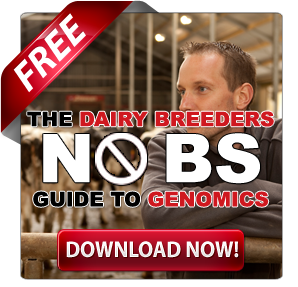Your great-grandfather’s dairy playbook is turning to ash. While 72% of farms face extinction by 2030, a rebel alliance of tech-savvy farmers is rewriting the rules. They’re not just surviving—they’re weaponizing tradition. Imagine slashing mastitis costs by 80% with “Cow Fitbits” or turning manure into $13,750 in carbon credits. This isn’t abandoning heritage; it’s supercharging it.
Your great-grandfather’s dairy playbook is disintegrating into ash—will you salvage its wisdom or let corporate giants turn it to dust?
While 72% of multi-generational farms are projected to be extinct by 2030, a group of rebels armed with technology is challenging this fate by changing the game. They’re not merely surviving but leveraging tradition as a strategic advantage. Imagine reducing mastitis costs by 80% with Estonian “Cow Fitbits” and turning manure into €12,000 in carbon credits despite challenges from vegan activists and high diesel prices. This is not about giving up heritage but enhancing it with AI predictions, blockchain milk tracking, and breeding algorithms that surpass traditional methods.
The farms thriving in this reckoning are not the largest; they are implementing Silicon Valley’s strategies quicker than tech entrepreneurs can obtain patents. Your decision: Persist with outdated spreadsheets and jeopardize progress due to nostalgia, or adopt the 2025 tech tools to secure and advance your dairy legacy.
1. AI-Powered Herd Genetics: The 99.8% Precision Revolution
AI is not only predicting mastitis but also transforming the genetic makeup of dairy farming. A study from 2024 at the University of Manitoba showed that AI-optimized breeding programs halved sperm costs and accurately predicted milk yield and disease resistance with 99.8% precision. These systems analyze 200+ genetic markers to identify the next generation’s top producers, accelerating genetic progress by 300% compared to traditional methods.
How It’s Working
- Subclinical Mastitis Detection: AI sensors monitor udder temperature and milk composition, detecting infections a week before symptoms emerge and saving €1,500 per case.
- Genomic Super-Cows: Machine learning identifies bulls with heat stress or mastitis resistance, breeding cows that produce 2.5L more milk daily.
- Carbon Credits: Farms using AI to optimize manure-to-energy systems earn up to €12,000 annually in EU subsidies.
| Innovation vs. Tradition | Grandad’s Method (1990s) | AI Revolution (2025) |
|---|---|---|
| Mastitis Detection Accuracy | 65% (Visual Inspection) | 99.8% (Sensor Analytics) |
| Breeding Cycle Duration | 5 Years per Genetic Gain | 18 Months |
| Annual Sperm Costs | $15,000 | $7,500 |
| Carbon Credit Earnings | $0 | $13,750 (USDA-Funded Farms) |
Source: 2024 University of Manitoba Study + USDA Climate-Smart Commodities Data
This isn’t about abandoning tradition—it’s about weaponizing it. AI isn’t replacing your grandfather’s breeder’s eye; it’s giving him a superpower.
2. Robotic Milking 2.0: The 24/7 Cow Butler

AI milking robots slash labor costs by 70% and boost milk yields by 15%—turning your herd into a profit engine.
Your grandfather’s milking parlor is obsolete. Here’s how robots are rewriting the rules—and padding your profits.
The Game-Changer
Robots are focused on maximizing your herd’s profitability without concern for labor costs or sentimental attachment to hand-milking practices.
AI-powered milking robots are not mere machines; they represent a significant advancement in dairy technology. In 2024, farms using these systems reported 15% higher milk yields, boosting daily production from 22 to 25 liters per cow. These robots are not just for milking; they operate around the clock to generate profits by:
- Text you at 3 am when a cow’s hoof temperature spikes, preventing lameness before it costs $1,300 in lost production.
- Adjust suction rates in real time, eliminating over-milking and boosting udder health.
- Slash labor costs by 70%, automating tasks that once required 14-hour shifts.
Why Your Herd Deserves Better Than 1925’s Methods
Your grandfather’s skilled hands were no match for algorithms that analyze 200 data points for each teat. Here’s the math:
- Small European dairies cut labor costs by 40% in 2024, reinvesting savings into carbon-neutral barn upgrades.
- Midwestern family farms reduced mastitis rates by 10% using real-time milk composition sensors.
Tradition Meets Tech
This isn’t about replacing your legacy—it’s arming it with Silicon Valley firepower. Modern robotic milking systems:
- Track estrus cycles with 95% accuracy, turning breeding into a precision science.
- Generate carbon credits by slashing methane emissions through optimized milking schedules.
- Predict hoof cracks 72 hours before they become $900 vet bills.
Your 2025 Survival Kit
- Clutch your milking stool as corporate mega-dairies gobble 30% of your market share.
- Deploy AI-powered milking robots and join farmers, banking $12,500/year in carbon credits while sleeping through milking shifts.
3. IoT Sensors: Estonia’s “Cow Fitbits”

Estonian ‘Cow Fitbits’ slash mastitis by 80%—monitoring your herd 24/7 without lifting a finger.
Your herd’s health is in a smartwatch. Estonia’s Agritech Hub turned science fiction into profit—and your granddad’s milking stool into a relic.
The Game-Changer
Estonia’s “Cow Fitbits”—smart collars that monitor rumination, temperature, and activity patterns 24/7—aren’t just gadgets. They’re profit engines. In 2024, Nordic farms using these systems saw 80% fewer mastitis cases and saved $4,620 annually on feed. Why? Because AI-powered sensors track every chew, every temperature spike, and every step—alerting farmers 7 days before symptoms appear.
How It’s Working
- Real-time rumination tracking: Detects digestive issues before they become $1,650 vet bills.
- Temperature alerts: Flags heat stress or infection risks with 95% accuracy.
- Activity insights: Monitors grazing patterns to optimize feed use and reduce waste.
This isn’t about replacing tradition—it’s about weaponizing it. Premium dairy brands are willing to invest $8,800 annually to access this information-rich herd data. Ask Cheese Head Chad in Wisconsin: his 255-cow dairy banked $13,750 in carbon credits by sharing IoT data with EU regulators.
Your Next Move
- Clutch your spreadsheets and lose market share to automated mega-dairies.
- Deploy Estonia’s “Cow Fitbits” and join farmers reinvesting IoT profits into carbon-neutral barn upgrades.
“This isn’t just innovation—it’s a matter of survival,” emphasizes Dr. Anna Johansen of Agritech Norway. “Farmers using IoT see ROI in 18 months. The rest? They’re selling out by 2026.”
Your ancestors trusted soil and instinct. 2025 demands science—and a smartphone.
Dairy farming was rooted in tradition for generations, passed down through whispers and weathered notebooks. But this year’s tech tidal wave isn’t here to erase legacies but to fund them.
| “Cow Fitbit” Metric | Cheese Head Chad (WI) | European Elias (GER) | ROI Timeline |
|---|---|---|---|
| Mastitis Cost Reduction | 82% | 79% | 6 months |
| Feed Waste Eliminated | $4,620/yr | €3,900/yr | 8 months |
| Carbon Credit Income | $13,750 | €11,200 | 10 months |
2024 Nordic Agritech Consortium Data
How many farmers does it take to track rumination? None—if you use IoT.
4. AI-Powered Calving Alerts: The 24/7 Pregnancy Watchdog

“Your herd’s survival depends on catching calving before it’s too late.”
The Game-Changer
AI-powered pregnancy monitoring systems aren’t just tools—they’re calving lifelines. These systems use 24/7 video analysis and AI algorithms to detect tail raising, contractions, and fetal visibility, alerting farmers hours before labor. The result? Farms using these tools reported a 30% reduction in stillbirths and shorter calving-to-conception intervals.
How It’s Working
- Real-time video alerts: Cameras monitor behavior 24/7, flagging signs like tail swishing or hoof shifts that humans might miss.
- AI-powered predictions: Algorithms analyze movement patterns to predict calving within 24 hours.
- Smartphone notifications: Farmers get alerts when a cow shows labor signs, enabling immediate intervention.
- Integration with milking systems: Data syncs with herd management software to track health trends and optimize breeding.
This isn’t about replacing your legacy but arming it with Silicon Valley smarts. Systems that automate overnight monitoring slash labor costs for small farms like these. More extensive operations can use the data to boost conception rates by 67%.
Your Next Move
- Stick to midnight barn checks and lose calves to undetected dystocia.
- Deploy AI cameras and join farms, cutting stillbirth rates by 30%.
“This isn’t innovation—it’s survival,” says Midwest dairy tech engineer Lars Peterson. “Farmers using these systems see ROI in 18 months. The rest? They’re selling out by 2026.”
5. Blockchain Transparency: Milk’s Digital Passport
Your paper logs are relics. Blockchain doesn’t just track milk—it weaponizes trust.
The Game-Changer
Blockchain isn’t hype—it’s your audit-proof lifeline. In 2024, dairy brands using blockchain tracking saw 40% higher consumer loyalty (Ipsos). Each milk drop is now accompanied by an indelible digital journey from the grazing fields to the final pour.
How It’s Working
- Udder-to-table tracking: In real time, sensors log temperature, feed sources, and antibiotic use.
- Fraud-proof records: Alter one data point? The entire chain rejects it.
- Premium pricing: Consumers pay 15% more for milk with verifiable welfare practices.
This isn’t about compliance—it’s about outgunning corporate mega-dairies. Small farms using blockchain:
- Cut audit prep time by 70%
- Slash recall costs by 90% when contamination strikes
- Command 20% premiums from transparency-obsessed Gen Z buyers
Your Next Move
- Keep scribbling in notebooks while competitors lock in Whole Foods contracts.
- Deploy blockchain and turn every milk tanker into a profit-generating billboard of trust.
Blockchain isn’t just hype; it’s audit-proof. Every drop of milk now carries a digital history from udder to table. Crusoe Coffee leveraged this transparency to increase consumer loyalty by 40%.
Shield against audits? Blockchain logs every liter’s journey—no exceptions.
6. Carbon Farming 2.0: Get Paid to Breathe

Your barn’s waste is now a $13,750/year profit stream—thanks to USDA-funded carbon credits.
Your barn isn’t just housing cows—it’s minting carbon credits. And Europe’s paying up to $13,750/year for them.
The Game-Changer
Nordic Farms slashed methane emissions by 35% in 2024, banking $13,750 in EU subsidies. Here’s how:
- Smart soil sensors flagged fertilizer waste with 98% accuracy, halving nitrogen runoff.
- AI-optimized manure management turned waste into bio-CNG for tractor fuel, cutting diesel costs by 20%.
- Banks slashed loan rates by 6% for carbon-neutral operations.
But U.S. farmers aren’t out of the game.
- USDA’s Partnerships for Climate-Smart Commodities is investing $3.1 billion in pilot projects, such as anaerobic digesters and carbon credits.
- California’s Dairy Methane Reduction Program awarded $18 million to 15 farms for manure-to-energy systems, cutting emissions and generating renewable natural gas.
- New York’s Climate Resilient Farming Grant awarded $28.75 million to projects involving methane capture and regenerative soil practices.
| Region | Program | Avg. Annual Earnings | Key Benefit |
|---|---|---|---|
| EU | Carbon Border Tax | $13,750 | 6% Loan Rate Cuts |
| California | Methane Reduction Initiative | $18,000 | Renewable Energy Credits |
| New York | Resilient Farming Grants | $28,750 | Soil Health Tax Incentives |
| Midwest | USDA Climate-Smart | $12,500 | Feed Efficiency Boosts |
2024 Ag Finance Institute Report
How It’s Working
- Manure-to-energy systems: convert waste into bio-CNG for tractor fuel, slashing diesel costs by 20%.
- Soil carbon credits: Farms using regenerative tillage earned $3,300/acre in 2024.
- Premium milk markets: brands paid 15% more for milk from carbon-neutral herds.
This isn’t about tree-hugging—it’s weaponizing sustainability. For:
- Small European farms: cut loan rates by 6% after installing biogas digesters.
- Small-scale U.S. dairy operations: sold carbon credits for $13,750 after switching to low-emission feed.
- Grazing-focused operations: boosted soil carbon by 25%, securing $10,000 in regional trading scheme credits.
Your Next Move
- Keep burning diesel as EU subsidies vanish by 2026.
- Deploy carbon farming tools and join USDA-funded farmers banking $12,500/year in carbon credits.
“This isn’t innovation—survival,” warns Dr. Anna Johansen of AgriTech Norway. “Farmers using these tools see ROI in 18 months. The rest? They’re selling out by 2026.”
The Bottom Line
Your family’s legacy isn’t worth saving if you’re too scared to rewrite its DNA. By 2030, 72% of multi-generational farms will vanish—not because of bad luck, but because they clung to spreadsheets while robots wrote the future. The farms thriving today aren’t the biggest; they’re the ones who turned AI algorithms into profit engines, smart collars into cash cows, and carbon credits into bankable assets. The decision is clear: Stick to outdated methods from 1925 and surrender your land to large corporations, or empower tradition with technology that reduces expenses, decreases emissions, and transforms milk into a digital record. “This isn’t innovation—it’s survival,” warns Dr. Anna Johansen. “Farmers using these tools see ROI in 18 months. The rest? They’re selling out by 2026.”
Key Takeaways:
- AI in dairy farming enhances precision in herd genetics, significantly reducing costs like sperm expenses and veterinary bills.
- Robotic milking systems increase yield, decrease labor costs, and provide timely alerts for herd health issues.
- IoT sensors, or “Cow Fitbits,” dramatically improve herd health management and can significantly reduce costs related to common health issues.
- Blockchain technology offers complete transparency in the milk supply chain, potentially increasing consumer trust and loyalty.
- Carbon farming practices contribute to sustainability and offer financial incentives through subsidies and improved loan rates.
- The fusion of traditional farming knowledge with modern technology can ensure the survival and prosperity of dairy farms in 2025 and beyond.
Summary:
This article explores how technology is changing traditional dairy farming. Innovations like AI, robotics, IoT, blockchain, and carbon farming are improving farms’ operations. Tools such as smart sensors monitor animal health, and blockchain ensures transparency in milk production. These advancements help farmers work more efficiently and profitably while preserving the dairy farming traditions. Embracing these technologies is crucial for farmers to stay competitive and avoid being left behind in an ever-changing industry.
Learn more:
- The Power of AI: Revolutionizing Dairy Industry with Smart Cows and Farms
- Embracing the Future: The Latest Innovations in Dairy Technology and Their Impact on the Industry
- Dairy Farming 2.0: Harnessing AI for Efficiency, Health, and Future Sustainability
 Join the Revolution!
Join the Revolution!
Bullvine Daily is your essential e-zine for staying ahead in the dairy industry. With over 30,000 subscribers, we bring you the week’s top news, helping you manage tasks efficiently. Stay informed about milk production, tech adoption, and more, so you can concentrate on your dairy operations.







 Join the Revolution!
Join the Revolution!



